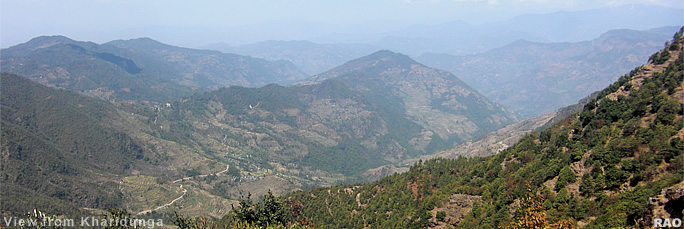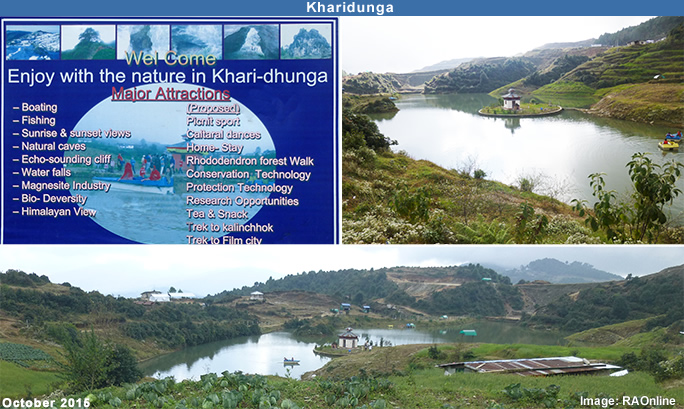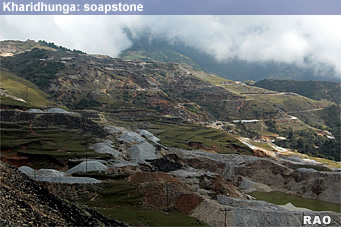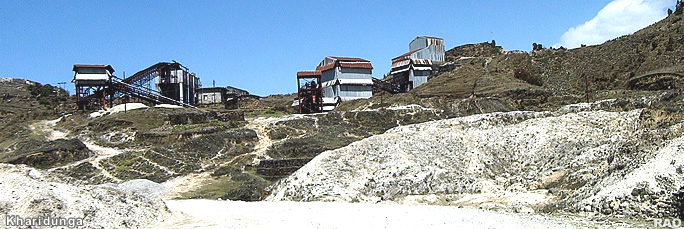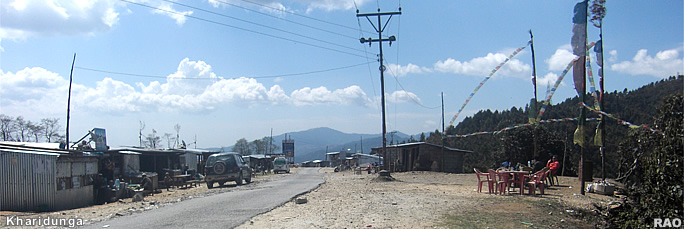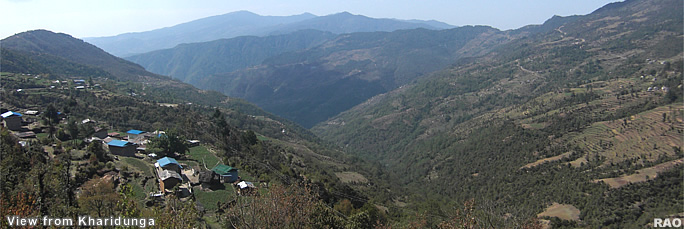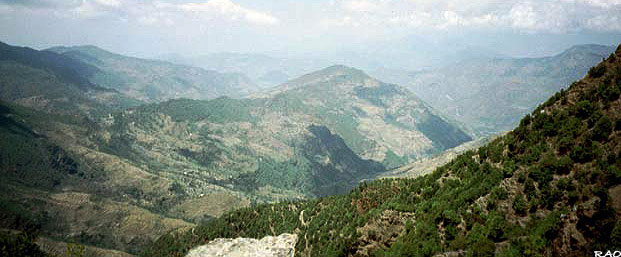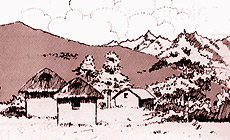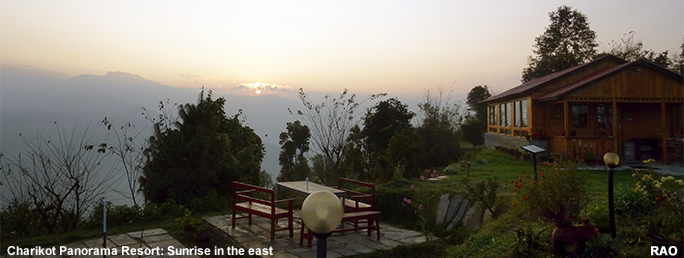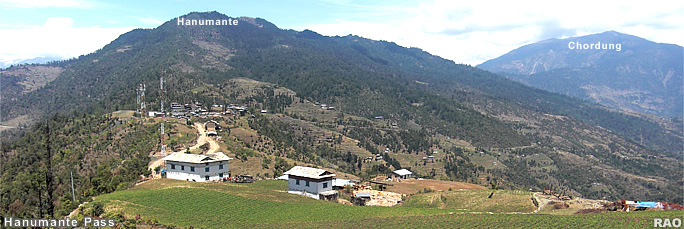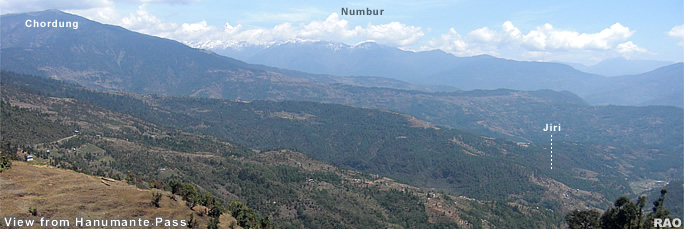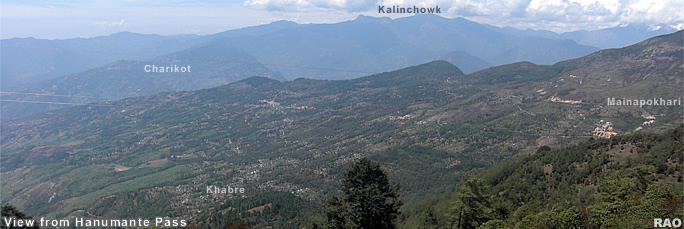 |
Charikot
- Dolakha: Outdoor Activities |
|
|
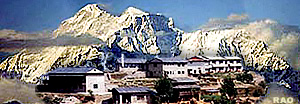 |
110
km from
Kathmandu; takes almost 5 to 6 hours by car, or more as a half a day by bus.
On
the way you pass through Lamosangu where the road to Jiri is leaving
the Arniko Highway crossing Sun Koshi River by a steel bridge constructed
by Swiss Association for Technical Assistance.
From
March to May, watch out for the beautiful rhododendrons blossoming along
the road especially on km 22 to 28. At Mure there is a Buddhist
gomba bullt by the local Tamangs. As the road climbs higher, one gets splendid
views of the Himalayan range; on a clear day even Dhaulagiri and Annapurna
can be seen in the Far West.
Kharidhunga boasts one of the world's
best magnesite deposits; and intensive industrial mining took place here,
providing employment to the surrounding villages and much needed cash to
the Govemment. Now the mining company has closed the site due to lack of
maintainance. The public road passing across the site is in very bad condition.
At 2,660 metres above sea level, this is as of today the highest road pass
in Nepal.
top
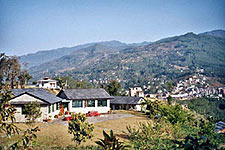 |
| Charikot
110
km from Kathmandu; takes almost 4-5 hours by car , or more as a half a
day by bus. Charikot provides a spectacular mountain view the prominent
peak being Gauri Shanker (7,146 m). On Saturday there is a Haat Bazaar
for those who enjoy a market day. There are many lodges in Charikot and
it is worth an overnight stay. The district headquarters are located above
the old bazaar from where the road leads down to Dolakha (1 hour
walk or short trip by bus). |
|
top
Shortly
before Busti village the road crosses the Tama Koshi on a
72 m clear span bridge at Nayapul. Nayapul has teashops and a bus
stop as well. A wonderful beach like pleasure ground for those who love
'messing about' by the banks of rivers. You can picnic fish watch for birds
or walk for fifteen minutes on the fight bank down to Charange.
There you find twenty houses with as many teashops. Fresh flsh is still
a delectable addition to the 'dhal bhat' served here. A popular festival
takes place here at Bab-Chaitra Dasain (early April) each year. The walk
leads you through forests of pine and sal. Just above the bridge a new
road was being built to Ramechhap.
top
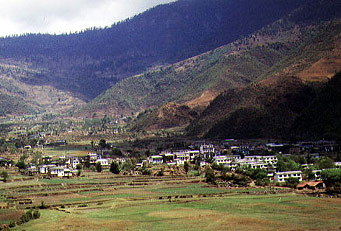 |
| Jiri
190
km from Kathmandu and the end of the Lamosangu-Jiri road. On the way one
passes the elephantine of hill clothed with dark foret that is called Hanumante.
Rhododendron trees around up here with early blossoms from mid-February.
The local people believe that there was once an image of Hanuman ( the
monkey god who was the help-mate of Rama, the hero in the epic Ramayana)
in this forest. News of the image's powerr spread far and wide until
by Royal Decree it was removed to Kathmandu to guard the main gate of the
old Royal Palace Pabee (Hanuman Dhoka). |
|
The
name of Jiri is actually derived from the sound of wolves in the
forests surrounding the village. 'Ri' meaning forest and 'Ji' meaning jungle
noise in the language of the Jirels. The name of the Jirels must have been
fashioned after the name of Jiri itself since the ancient Sunwar name was
Lincan.
The
road first reaches Jiri bazaar where a big market is held every Saturday.
Food and accommodation are both available here at accetable rates and standards.
Two kilometers further down we finally come to Jiri. It boasts an airfield
(not in use at this time), a livestock farm (still in operation), a hospital.
There are several lodges in Jiri too.
In
Jiri baazar you can buy hill-crafts - carved wooden utensils which although
not traditional (except for incense sticks and candle holders and a few
others) are attractive, inexpensive and useful items. Hand-woven carpets
in fireside and chair-size pieces are also available.
It
is from Jiri that you cen start your trek to Those, Chordung and Thodung. Even if your time is limited, a walk around Jiri valley
will be a welcome exercise for your legs.
|


